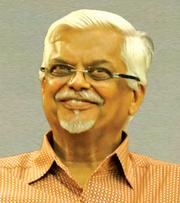
SANJAYA BARU
THE Ambani family’s over-the-top partying at Jamnagar has been widely commented upon at home and abroad. Only the socially unaware were surprised by it. It was entirely in keeping not just with the in-your-face edifice, Antilia, that the family lives in on Mumbai’s Altamount Road but also the general lifestyle of India’s new billionaires. The only difference between the Ambani family party and the many hosted by other Indian billionaires is that the former staged their extravaganza in Jamnagar, Gujarat, Bharat. Most other billionaires have had their wedding parties in exotic places around the world, from Paris to Phuket.
Flying off to distant lands on chartered planes with family and friends has been in vogue for India’s rich for some time now. It has been estimated that in recent years as much as one lakh crore rupees has been spent on what are dubbed ‘destination weddings’. Aware of this growing proclivity of India’s super-rich to stage their fancy wedding parties overseas, Prime Minister Narendra Modi gave a call for atmanirbharta in ostentatiousness. The Economic Times said the Prime Minister’s new slogan was 'Wed in India'— a ‘Make in India Marriage’ campaign aimed at saving foreign exchange and boosting nationalist pride among India’s globalized rich.
But India’s super rich have a problem. How can they spend all their income if it has to be spent at home in rupees? Moreover, what do they do with all the dollars stashed away overseas? Even if crores are spent on diamonds and fancy stones there are still millions waiting to be spent. After having displayed one set of diamonds at home how can they sport the same set again at home? Hosting parties around the world offers opportunities to display one’s diamonds to different sets of guests. That also helps spend the dollars in foreign banks.
The super rich, like the Ambanis and the Adanis, are a minuscule minority within the growing class of India’s wealthy. Over the past decade there has been a significant increase in the new wealthy in different parts of the country. The top three centres of new wealth are Delhi-Gurugram-Noida, Mumbai-Navi Mumbai and Hyderabad-Cyberabad. But new wealth is now found in pockets across the country. Data on luxury motor vehicles sales in India shows New Delhi topping the charts, followed by Mumbai, Bengaluru, Chennai, Kolkata, Hyderabad, Ahmedabad, Pune, Ludhiana and Surat. India is now ranked as the fifth most important market for cars, after China (1), the US (2), Japan (3) and Germany (4).
New wealth is being generated in a range of economic activities with real estate being the most prominent. Next to real estate it would seem that wealth is being generated in globally connected businesses like information technology and related business. The rural rich have also emerged as an important segment in India’s consumption story as analyst Rama Bijapurkar has noted in her new book, Lilliput Land: How Small is Driving India’s Mega Consumption Story (Penguin Random House, India, 2024). The rural rich range from those living in proximity to expanding cities and benefitting from rising real estate values to rich farmers diversifying into profitable crops, commodities and related business. Their income is often not taxed, nor is the income from sale of agricultural land, which, on the edges of expanding urban centres, brings in large sums of disposable income.
When Gurugram was being built the Jat farmers selling their land to real estate firms were buying up what they referred to as “char churi gaadi”, referring to the high-end Audi car with its logo that looks like four bangles. Drive on the edges of Hyderabad, Bengaluru, Pune or any other expanding urban space and one sees only high-end cars. The Hyderabad airport has a large poster reminding visitors that the city is home to the largest number of High Net Worth Individuals (HNIs). Most of them have made their millions in real estate.
This newly rich class is unabashedly ostentatious. It is they who travel overseas to stage wedding parties, who populate luxury cruise ships in the Pacific and the Mediterranean, and who buy BMWs and fancy motorcycles. This is the new ‘spending class’ whose basic household expenditure constitutes a decreasing share of income, leaving larger sums of disposable income that goes only partly into savings and increasingly into spending. This ‘surplus income’, as Bijapurkar defines the difference between income and what she calls ‘routine’ household expenditure (not including episodic expenditure on health or education) is estimated to be as high as 35 percent for the richest 20 percent of all households. It declines sharply to 13 percent for the next 20 percent of households and is down to zero for the middle 20 percent. The bottom 40 percent dissave to spend, with expenditure exceeding income.
This data is, of course, for each of the five quintiles. But India’s super-rich are less than one percent of the population and their incomes have been rising sharply, especially since demonetization in 2016 and the Covid lockdown in 2020. Bijapurkar’s data on consumption in India shows clearly the nature of what has been described by economists as a ‘K-shaped’ growth process, with the share of the rich in national income rising while that of the poor is falling. The most striking data is the share of income of the richest and poorest quintiles in 2020-21 compared to 2015-16. In 2015-16 the share of the poorest 20 percent in total household income was 7.0 percent. This was down to 3.3 percent in 2020-21. The richest 20 percent improved their share from 44.9 percent in 2015-16 to 56.3 percent in 2020-21. That about sums up what Amrit Kaal is all about.
Sanjaya Baru is a writer and Distinguished Fellow at the United Service Institution of India
Comments
Currently there are no Comments. Be first to write a comment!




